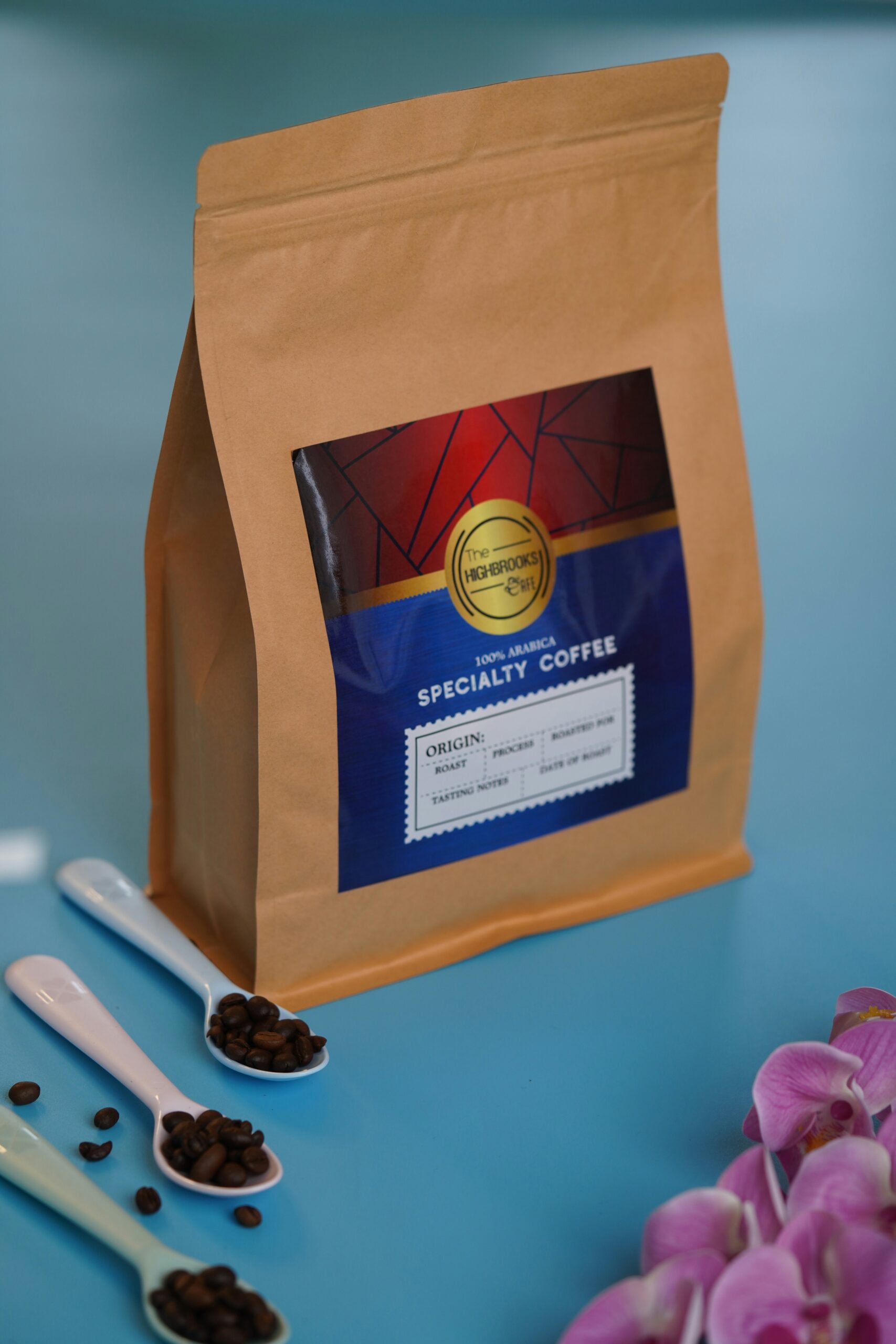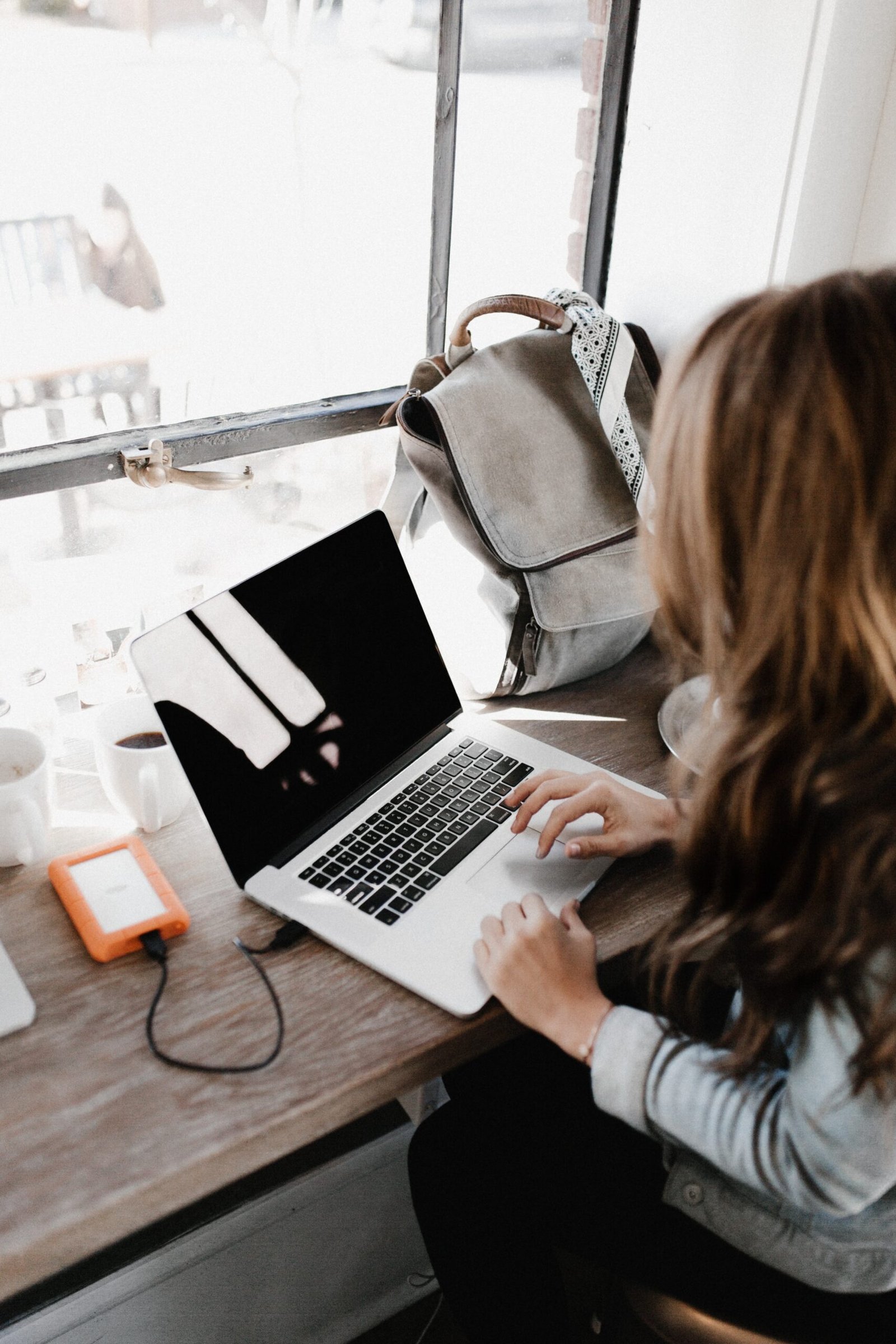Let’s talk about Sustainable Packaging
Sustainable packaging has become an increasingly critical aspect of modern business practices, reflecting a growing societal commitment to environmental responsibility. It involves the use of materials and processes designed to minimize ecological impact, ensuring that the packaging is both efficient in its primary function and considerate of its lifecycle from production to disposal. For small businesses, integrating sustainable packaging solutions can significantly enhance brand reputation by aligning with the values of eco-conscious consumers who prioritize environmental stewardship.
The benefits of sustainable packaging for the environment are substantial. By opting for materials that are biodegradable, recyclable, or made from renewable resources, companies can reduce their carbon footprint and mitigate waste. This shift not only helps in conserving natural resources but also in curbing pollution, thus contributing to a healthier ecosystem. Sustainable packaging solutions can also lead to reduced energy consumption during production processes, further augmenting their environmental advantages.
From a consumer standpoint, sustainable packaging can significantly boost appeal and loyalty. Modern consumers are increasingly informed and selective about the environmental practices of the brands they support. By adopting sustainable packaging, small businesses can differentiate themselves in a crowded marketplace, appealing to consumers who are willing to pay a premium for products that align with their values. This consumer preference underscores a broader trend towards sustainability in purchasing decisions, which businesses can leverage to foster long-term customer relationships.
In today’s market, where sustainability is no longer just a buzzword but a tangible business imperative, small businesses have a unique opportunity to lead by example. By embracing sustainable packaging, they not only contribute positively to the environment but also position themselves as forward-thinking and responsible entities. This strategic alignment with sustainability can serve as a powerful tool for attracting and retaining a dedicated customer base, setting the stage for growth and success in a progressively eco-conscious marketplace.
Why Personalization Matters
In today’s competitive market, personalization in packaging is not just an added bonus; it is a necessity for small businesses aiming to stand out. Customized packaging serves as a powerful tool that can greatly enhance a brand’s identity and significantly enrich the customer experience. It’s important for brands to tell their story, and personalized designs can effectively convey this narrative, adding a unique touch that resonates well with their target audience. The way a product is packaged often serves as the first physical interaction a customer has with the brand, and a well-thought-out design can make this moment memorable.
Personalized packaging goes beyond aesthetics. It plays a pivotal role in creating an immersive unboxing experience. When customers receive a product that is thoughtfully packaged, it elevates their overall perception of the brand. Elements such as custom logos, brand colors, and intricate designs can make the unboxing experience much more exciting. This not only leads to immediate customer satisfaction but also increases the likelihood of repeat purchases. Furthermore, a memorable unboxing experience is more likely to be shared on social media platforms, providing free and authentic promotion for the brand.
Moreover, personalized packaging fosters customer loyalty by making clients feel valued and appreciated. When consumers perceive that extra effort has been made to tailor the packaging for them, it evokes a sense of exclusivity and personal connection to the brand. Over time, this can lead to stronger brand loyalty and higher customer retention rates. Personalization in packaging thus acts as a cornerstone for building long-lasting relationships with customers, which is critical for the sustainable growth of small businesses.
By integrating these personalized elements, brands not only boost their aesthetic appeal but also create a holistic, memorable, and engaging customer experience. In sum, personalized packaging is an invaluable strategy for amplifying brand identity, enhancing customer satisfaction, and fostering loyalty.
Choosing the Right Materials
When it comes to crafting personalized, sustainable packaging for small businesses, selecting the right materials is paramount. Understanding the environmental impact and cost-effectiveness of various materials can significantly influence decision-making. Sustainable packaging often includes options such as recycled paper, biodegradable plastics, and reusable materials.
Recycled paper is a highly sustainable option, widely recognized for its low environmental impact. It is derived from post-consumer waste, reducing the demand for virgin paper and lessening deforestation. Recycled paper is versatile and can be used for a range of packaging types, including boxes, bags, and padding. The cost-effectiveness of recycled paper is another advantage, as the adoption of this material can often be more affordable over time compared to traditional, non-recycled options.
Biodegradable plastics are an innovative solution designed to minimize the environmental footprint. These plastics are engineered to break down more quickly and safely when compared to conventional plastics. They are derived from natural sources, such as corn starch, and designed to decompose under certain conditions. For businesses seeking eco-friendly alternatives, biodegradable plastics can offer a balance between functionality and sustainability. However, it is crucial to assess the true biodegradability characteristics and ensure they meet the specific needs of the business.
Reusable packaging options present another sustainable path. These materials include durable containers, cloth bags, and other packaging that can be repeatedly used. The longevity of reusable packaging can significantly reduce waste and promote a circular economy. Additionally, reusable packaging can be tailored to reflect the brand’s identity, enhancing the customer experience while demonstrating a commitment to environmental stewardship.
Ultimately, the selection of sustainable packaging materials should align with the values and operational requirements of the small business. Factors such as environmental impact, functionality, and cost-efficiency must be carefully balanced to make informed, responsible decisions. By choosing the right materials, small businesses can contribute to a more sustainable future while meeting their packaging needs effectively and economically.
Designing Sustainable Packaging
In today’s environmentally conscious market, the design of sustainable packaging has become a pivotal aspect for small businesses aiming to showcase their commitment to eco-friendly practices. The foundation of such designs lies in the adoption of minimalist aesthetics, which not only reduce material wastage but also present a cleaner, more elegant appearance. Minimalist packaging often emphasizes simplicity, using fewer colors and less intricate designs, which can directly contribute to reduced ink and material use.
Moreover, the choice of inks plays a vital role in sustainable packaging. Traditional inks, often derived from petroleum, pose various environmental challenges. Hence, transitioning to eco-friendly inks, which are typically soy-based or vegetable-based, can significantly lower the ecological footprint of your packaging. These inks are biodegradable and emit fewer volatile organic compounds (VOCs), making them a greener choice for printing needs.
The challenge lies in striking a balance between functionality and sustainability. Packaging must provide sufficient protection for products during transit while still minimizing environmental impact. This can be achieved by using recyclable or compostable materials that do not compromise the durability of the packaging. Consider opting for materials like kraft paper, molded pulp, or biodegradable plastics which offer robust protection without contributing to landfill waste.
Aligning your sustainable packaging design with your brand identity is crucial. The packaging should not only be eco-friendly but also reflect your brand’s ethos. For instance, if your brand promotes natural and organic products, the use of earthy tones and rustic design elements in your packaging can reinforce this narrative. Customizing packaging to mirror your brand values ensures a cohesive message, enhancing brand loyalty and consumer trust.
In essence, designing sustainable packaging doesn’t solely benefit the environment; it also serves as a testimony to your brand’s ethical practices, attracting a conscious consumer base. Through mindful design choices, small businesses can lead the way in advocating for sustainability while maintaining a strong, recognizable brand identity.
The Role of Technology in Sustainable Packaging
Technology serves as a cornerstone for small businesses striving to achieve sustainable packaging goals. Advanced design software now enables businesses to create detailed, eco-friendly packaging prototypes efficiently. These digital tools enhance the ability to optimize materials and reduce waste during the initial design phase, providing significant sustainability benefits.
One prominent technological advancement is digital printing, which has revolutionized the packaging industry. Digital printing offers small businesses the flexibility to test various designs, materials, and configurations without the need for large print runs. This method not only minimizes resource consumption but also allows for a higher degree of customization, ensuring that packaging meets specific customer demands and brand identities.
Moreover, technology bridges the gap between sustainability and scalability. Tools for creating customizable packaging solutions play a pivotal role in this connection. Software platforms that integrate inventory management with packaging production enable businesses to produce packaging on-demand, reducing surplus and associated environmental impacts. This approach ensures that materials are used optimally, aligning with sustainable practices.
Equipped with cutting-edge software solutions, small businesses can also accurately forecast packaging needs based on market trends and sales data. This predictive capability helps in planning and reducing overproduction, which is a critical component of sustainability. The integration of technology allows for a cohesive strategy where packaging is not only eco-friendly but also cost-effective and adaptable to market fluctuations.
In conclusion, as small businesses navigate the complexities of sustainable packaging, technology provides indispensable tools that help them balance environmental responsibility with operational efficiency. By leveraging design software, digital printing, and customizable packaging solutions, businesses can achieve their sustainability goals and enhance their market competitiveness. The fusion of innovation and eco-consciousness in packaging is essential for creating a sustainable future.
Cost Considerations and Budget Tips
For many small businesses, the transition to sustainable packaging may initially seem daunting due to perceived high costs. Nevertheless, it is important to consider that sustainable packaging can be an investment leading to significant long-term savings and brand growth. This section will delve into the financial aspects, offering practical advice on budgeting and cost-saving strategies.
One of the primary considerations is the overall cost of materials. While sustainable materials, such as recycled paper, biodegradable plastics, or compostable packaging, might have higher upfront costs compared to traditional options, they often come with long-term benefits. For instance, bulk purchasing of these materials can reduce per-unit costs significantly. Building strong collaborations with suppliers to negotiate better deals or joining cooperative buying groups can also lower expenses.
Moreover, investing in durable sustainable packaging can reduce waste and reordering frequency, thereby contributing to cost efficiency. The use of durable materials means fewer replacements and less financial outlay over time. Implementing a lean approach in packaging design, which focuses on using only what is necessary, can also reduce material costs while promoting sustainability.
Small businesses can also consider customized packaging solutions tailored to their specific needs, which can minimize wasted space and materials. For instance, right-sizing packaging ensures that there is less unused space, reducing the need for excess packaging fillers. This not only lowers material costs but can also reduce shipping costs due to smaller, lighter packages.
Lastly, implementing sustainable packaging solutions can drive brand growth. Consumers today are increasingly eco-conscious and tend to support brands that prioritize sustainability. By showcasing a commitment to the environment, small businesses can attract and retain a loyal customer base, ultimately leading to increased sales and revenue over time. The initial investment in sustainable packaging, therefore, should be seen as a strategic move towards long-term profitability and brand equity.
Case Studies of Successful Small Businesses
In the evolving landscape of commerce, small businesses are increasingly embracing the concept of personalized, sustainable packaging. By integrating eco-friendly materials and customized designs, they are achieving remarkable milestones. This section delves into real-world examples of small businesses that have successfully implemented these strategies, underscoring both the challenges they encountered and the subsequent benefits garnered.
Green Artisan
Green Artisan, a small boutique specializing in handmade organic skincare products, decided to redefine its packaging approach. Initially, they struggled with high costs and limited design options for sustainable packaging. However, by collaborating with local eco-packaging suppliers, they managed to source biodegradable materials that could be creatively printed on. This not only enhanced their brand visibility but also attracted a customer base that values environmental responsibility. The business saw a 30% increase in repeat customers and a surge in social media shares, thereby amplifying brand awareness organically.
Eco Chic Apparel
Eco Chic Apparel, known for its sustainable fashion, faced significant hurdles when transitioning from conventional plastic packaging to eco-friendly alternatives. Their strategy included conducting extensive research to identify packaging that was both sustainable and stylish. After testing various materials, they settled on recycled cardboard and mushroom-based compostable packaging. The new packaging solution reinforced their brand ethos and contributed to a 25% boost in customer satisfaction ratings. Additionally, the company experienced a notable reduction in carbon footprint, which became a pivotal marketing point in their campaigns.
Sweet Treats Bakery
Sweet Treats Bakery, a small family-owned business, took a creative approach to personalized, sustainable packaging. Their strategy involved developing unique, eco-friendly packaging designs that reflected the artisanal nature of their baked goods. Despite initial setbacks in finding suitable materials that ensured product freshness, they eventually developed recyclable, food-safe packaging in collaboration with a green packaging consultant. This endeavor not only minimized waste but also delighted customers who appreciated the thoughtfully designed, sustainable packaging. Consequently, Sweet Treats Bakery reported a 20% rise in customer engagement and a corresponding increase in sales.
These successful small businesses illustrate the profound impact of personalized, sustainable packaging. By overcoming significant challenges and leveraging innovative solutions, they demonstrated that eco-friendly packaging is not only feasible but also beneficial in driving customer loyalty and enhancing brand reputation.
Action Plan for Small Businesses
Transitioning to sustainable, personalized packaging requires a strategic approach, especially for small businesses. The first step is setting clear, measurable goals. Define what sustainability means for your brand, whether it is reducing carbon footprint, using recyclable materials, or minimizing waste. These objectives will guide your decision-making process throughout the transition.
Next, finding the right suppliers is crucial. Look for suppliers with a proven track record in sustainable materials and practices. Research their certifications and customer reviews to ensure they align with your sustainability goals. Establishing a strong partnership with a reliable supplier can significantly streamline your packaging process.
Once you have your suppliers in place, iterate on your design. Personalized packaging should not only be sustainable, but also reflect your brand’s identity. Use eco-friendly materials like recycled paper or biodegradable plastics and incorporate elements such as customized logos, colors, and textures that resonate with your audience. Testing different designs and gathering customer feedback will help refine your approach.
Marketing the new packaging to customers is another critical step. Communicate the changes through your marketing channels, highlighting the environmental benefits and the value of personalized touches. Utilize social media, email newsletters, and your website to showcase the new packaging and explain why the shift was made. Not only does this educate your customers, but it also reinforces your brand’s commitment to sustainability.
Implementing sustainable, personalized packaging is not just about the materials and designs; it’s about creating a consistent message that aligns with your brand values and resonates with your customers. By following this action plan, small businesses can significantly enhance their sustainability efforts while strengthening their brand identity.




